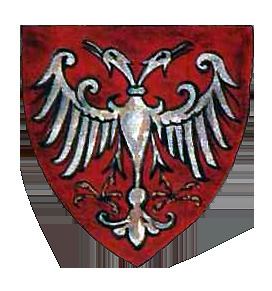 | ||
The Great Migrations of the Serbs (Serbian: Velike seobe Srba/Велике сеобе Срба), also known as the Great Exodus, refers mainly to two large migrations of Serbs from the Ottoman Empire to the Habsburg Monarchy.
Contents
The First Serbian Migration occurred during the Great Turkish War under Patriarch Arsenije III Čarnojević, and came as a result of the Habsburg retreat from Ottoman territories in the Balkans, which were temporarily held by the Habsburgs between 1689 and 1692. The Second Serbian Migration took place in 1737–1739 under the Patriarch of Peć, Arsenije IV Jovanović, also parallel with the Habsburg withdrawal from territories that they held in the Balkans, which between 1718 and 1739 were known as the Kingdom of Serbia and Banat of Temeswar. The earlier mass of the migrants are considered ethnically Serb, while those of the First Migration nationally Serbs as the migration brought with it the definitive indicator of Serbianness, the religion and the patriarch.
Background
The influx of Serbs to the Habsburg Monarchy, constant since the fall of Serbian Despotate in the late 15th century, gained more momentum following the Statuta Valachorum act of 1630, by which the Habsburgs encouraged their settlement in the Military Krajina region.
First Migration
During the Austro-Turkish war (1683–1699) relations between Muslims and Christians in the European provinces of the Ottoman Empire were extremely radicalized, resulting in calls by Muslim religious leaders for the persecution of local Christians and Jews. As a result of oppression, Serbian Christians and their church leaders, headed by Serbian Patriarch Arsenije III sided with the Austrians in 1689. In the following campaigns, Turkish forces conducted systematic atrocities against the Christian population in Serbian regions, resulting in the Great Migration of 1690.
In 1690, Emperor Leopold I allowed the refugees gathered on the banks of the Sava and Danube in Belgrade to cross the rivers and settle in the Habsburg Monarchy. He recognized Patriarch Arsenije III Čarnojević as their spiritual leader. The Emperor had recognized the Patriarch as deputy-voivode (civil leader of the migrants), which over time developed into the etymology of the northern Serbian province of Vojvodina (this origin of the name of Vojvodina is related to the fact that patriarch Čarnojević and subsequent religious leaders of Serbs in the Habsburg Monarchy had jurisdiction over all Serbs in the Habsburg Monarchy, including Serbs of Vojvodina, and that Serbs of Vojvodina accepted the idea of a separate Serbian voivodeship in this area, which they managed to create in 1848).
In 1694, Leopold I, Holy Roman Emperor appointed Arsenije III Čarnojević as the head of the newly established Orthodox Church in the Monarchy. The patriarchal right of succession was secured by the May Assembly of the Serbian people in Karlovci in 1848, following the proclamation of Serbian Vojvodina during the Serbian revolution in Habsburg lands 1848–49. Serbs received privileges from the Emperor, which guaranteed them national and religious singularity, as well as a corpus of rights and freedoms in the Habsburg Monarchy.
Most of the Serbs from this migration settled in the territory of present-day Hungary, while a smaller part of them settled in the territory of present-day Croatia and present-day north-western Vojvodina (the rest of Vojvodina was still under Ottoman administration). This, however, did not result in a significant increase of the existing Serb population in the territory of present-day Vojvodina. Serbs, together with Muslims, were recorded as a dominant population in Vojvodina long before the migration, i.e. in the time of Ottoman administration (16th–17th century).
Second Migration
The fall of the Habsburg Kingdom of Serbia (1718–1739) to the Ottomans triggered the Second Serb migration into the (rest of the) Habsburg Monarchy.
The Second Serb migration from 1739 was of much smaller extent than the first one from 1690 and most of the refugees from the second migration settled in Syrmia.
Number of migrants
Sources provide different data regarding the number of people in the first migration:
According to Noel Malcolm, data that state that 37,000 families participated in this migration derive from a single source: a Serbian monastic chronicle which was written many years after the event and contains several other errors.
Aftermath
Serbs from these migrations settled in parts of present-day Hungary, Vojvodina, and Croatia (they settled as far in the north as the town of Szentendre in Hungary, in which they formed the majority of population in the 18th century). To a smaller extent, they also settled in the town Komarno in Slovakia.
The large Serb migrations from Balkans to the Pannonian plain started in the 14th century and lasted until the end of the 18th century. The great migrations from 1690 and 1737–39 were the largest ones and were important reason for issuing the privileges that regulated the status of Serbs within Habsburg Monarchy. The Serbs that in these migrations settled in Vojvodina and Slavonia increased (partly) the existing Serb population in these regions and made the Serbs an important political factor in the Habsburg Monarchy over time.
